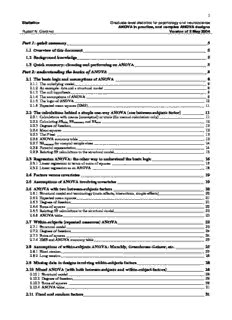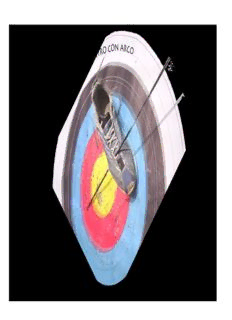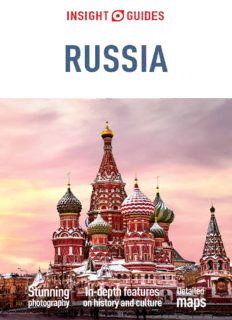
Industrial Mathematics and Complex Systems: Emerging Mathematical Models, Methods and Algorithms PDF
Preview Industrial Mathematics and Complex Systems: Emerging Mathematical Models, Methods and Algorithms
Industrial and Applied Mathematics Pammy Manchanda René Lozi Abul Hasan Siddiqi Editors Industrial Mathematics and Complex Systems Emerging Mathematical Models, Methods and Algorithms Industrial and Applied Mathematics Editor-in-chief Abul Hasan Siddiqi, Greater Noida, India TheIndustrialandAppliedMathematicsseriespublisheshigh-qualityresearch-level monographs, lecture notes and contributed volumes focusing on areas where mathematics is used in a fundamental way, such as industrial mathematics, bio-mathematics, financial mathematics, applied statistics, operations research and computerscience. More information about this series at http://www.springer.com/series/13577 é Pammy Manchanda Ren Lozi (cid:129) Abul Hasan Siddiqi Editors Industrial Mathematics and Complex Systems Emerging Mathematical Models, Methods and Algorithms 123 Editors Pammy Manchanda AbulHasan Siddiqi Department ofMathematics Schoolof BasicSciences andResearch Guru NanakDev University Sharda University Amritsar, Punjab Greater Noida, Uttar Pradesh India India RenéLozi CNRS, DieudonnéCenterof Mathematics University Côted’Azur Nice France ISSN 2364-6837 ISSN 2364-6845 (electronic) Industrial andAppliedMathematics ISBN978-981-10-3757-3 ISBN978-981-10-3758-0 (eBook) DOI 10.1007/978-981-10-3758-0 LibraryofCongressControlNumber:2017946022 ©SpringerNatureSingaporePteLtd.2017 Thisworkissubjecttocopyright.AllrightsarereservedbythePublisher,whetherthewholeorpart of the material is concerned, specifically the rights of translation, reprinting, reuse of illustrations, recitation, broadcasting, reproduction on microfilms or in any other physical way, and transmission orinformationstorageandretrieval,electronicadaptation,computersoftware,orbysimilarordissimilar methodologynowknownorhereafterdeveloped. The use of general descriptive names, registered names, trademarks, service marks, etc. in this publicationdoesnotimply,evenintheabsenceofaspecificstatement,thatsuchnamesareexemptfrom therelevantprotectivelawsandregulationsandthereforefreeforgeneraluse. The publisher, the authors and the editors are safe to assume that the advice and information in this book are believed to be true and accurate at the date of publication. Neither the publisher nor the authorsortheeditorsgiveawarranty,expressorimplied,withrespecttothematerialcontainedhereinor for any errors or omissions that may have been made. The publisher remains neutral with regard to jurisdictionalclaimsinpublishedmapsandinstitutionalaffiliations. Printedonacid-freepaper ThisSpringerimprintispublishedbySpringerNature TheregisteredcompanyisSpringerNatureSingaporePteLtd. Theregisteredcompanyaddressis:152BeachRoad,#21-01/04GatewayEast,Singapore189721,Singapore Preface The present volume is based on the selected invited and contributory talks during theinternationalconferenceheldatShardaUniversity,GreaterNoida,India,during January 29–31, 2016, on the occasion of the Silver Jubilee of the Indian Society of Industrial and Applied Mathematics. The conference was inaugurated by Mr.RajnathSingh, theMinisterfor HomeAffairs, Government ofIndia.Professor U.P.Singh,formerVice-ChancellorofPurvanchalUniversity,andformerPresident of the Indian Mathematical Society, chaired the inaugural session. Professor KR. Sreenivasan, former Director of Abdus Salam ICTP, Trieste, Italy (UNESCO organization), and currently a senior functionary of New York University, was the guest of honor who delivered the keynote address. There were 20 invited speakers and more than 300 participants from different parts of India and abroad. A good number of participants presented their research work as contributory talks. Abdus Salam International Centre for Theoretical Physics (ICTP) and International Mathematical Union (IMU) provided financial support for the participants from Malaysia, Turkey, and Uzbekistan. Several functionaries of the International Council for Industrial and Applied Mathematics (ICIAM) and eminent industrial and applied mathematicians such as Prof. Barbara Lee Keyfitz (immediate past PresidentofICIAM),Prof.MariaJ.Esteban(President,ICIAM),Prof.AlistairFitt (Vice-Chancellor, Oxford Brooke University, and former secretary, ICIAM), Prof. Leon O. Chua (University of Berkeley), Prof. Guenter Leugering (Vice-President, International Affairs, Friedrich Alexander University, Erlangen-Nurenberg, Germany), and Prof. Maria Skopina (Euler Institute of Mathematical Sciences, SaintPetersburgStateUniversity,Russia)participatedanddeliveredlectures.Three well-known Indian centers of applied and industrial mathematics: Tata Institute of Fundamental Research—Centre For Applicable Mathematics (TIFR CAM), Bengaluru; Indian Institute of Science (IISc), Bengaluru; and Indian Institute of Technology (IIT) Bombay, were represented by Prof. G.D.V. Gowda, Prof. A. Adimurthi, Prof. Mythly Ramaswamy, Dr. Venkateswaran P. Krishnan, Prof. G. Rangarajan, and Prof. A.K. Pani. The Silver Jubilee Committee of ISIAM honored Prof. Gowda, Prof. Pani, and Prof. Rangarajan for their valuable contributions in the field of industrial and v vi Preface applied mathematics. Professor A. Adimurthi (TIFR CAM, Bengaluru) and Prof. Mushahid Husain (Vice-Chancellor, Mahatama Jyotiba Phule (MJP) Rohilkhand University, Bareilly, Uttar Pradesh) were given the Dr. Zakir Husain award insti- tuted by the Duty Society, Aligarh Muslim University (AMU). Messages by the then President of India, Shri Pranab Mukherjee, and the Minister for Science and Technology, Dr. Harsh Vardhan, wished for a successful event. The invited and contributory talks cover various areas of applied mathematics andrepresentthelatestadvancesintheinterdisciplinaryfieldssuchasmathematics, environmentalscience,medicalsciences,oilexplorationandproduction,dynamical systems, and biological sciences. In Chap. 1, Barbara Lee Keyfitz surveys the current development in linear and nonlinearwavesingasdynamics.Shehasdiscussedmanyopenresearchproblems inthisfield.MariaJ.Estebanpresentsanaccountofnonlinearflowsandoptimality for functional inequalitiesinChap.2,based onherjoint workwithJeanDolbeault and Michael Loss. It is mainly related to rigidity results for nonnegative solutions of the semi-linear elliptic equation on infinite cylinder-like domains or in the Euclidean space and as a consequence, about optimal symmetry properties for the optimizers of the Caffarelli–Kohn–Nirenberg inequalities. Chapter 3 by David Walnut deals with theory and applications of frames. He discusses some situations in which frames have proven an especially useful tool, namely noise reduction, robust communications, compressive sensing, and phase- less recovery. In Chap. 4, challenging problems of industrial applications of multicore-implementednonlinearmappingsarediscussedbyReneLozi,Jean-Pierre Lozi, and Oleg Garasym. InChap.5,GuenterLeugering,FalkM.Hante,AlexanderMartin,LarsSchewe, andMartinSchmidtdiscussthechallengesinoptimalcontrolproblemsforgasand fluidflowinnetworksofpipesandcanals.Chapter6isdevotedtotherecentworkof MajazMoonisjointlywithAhmedulKabir,CarolinaRuiz,andSergioA.Alvarezon “comparisonofconventionalregressioninthemachinelearningmethodsforstroke outcomeprediction,”whichwillbepublishedinfullinthenextissueoftheIndian Journal of Industrial and Applied Mathematics. Professor Moonis in his talk also discussed the role of imaging in medical sciences, particularly in acute ischemic stroke. Besides stroke outcome prediction, the chapter is also devoted to the con- troversyofCATversusMRIinstrokemanagement,whichisanongoinghotdebate. In Chap. 7, B.I. Golubov and S.S. Volosivets present their new results on “Fourier transforms of multiplicative convolutions.” Chapter 8 by Maria Skopina studies tight wavelet frames with matrix dilations, which can be used in many practical situations. Chapter 9 by Akhtar Khan jointly with M. Cho, B. Jadamba, R. Kahler, and M. Sama is devoted to the development of a computational framework for the inverse problem of identifying variable parameters appearing nonlinearly in a variational problem. In Chap. 10, M. Brokate and M. Yu Rasulova present the solution of the hier- archyofquantumkineticsequationswithdeltapotential.InChap.11,YelizKaraca, Zafer Aslan, and A.H. Siddiqi present the applications and comparison of 1-DWT transform and partial correlation multiple sclerosis and subgroup diagnostic Preface vii classification. In Chap. 12, V. Gowda discusses his recent results in the domain of finite volumemethod for nonlinear system of hyperbolic conservationlawsarising inoilreservoirsimulation.InChap.13,MeenakshiandP.Manchandastudycertain properties of Haar–Vilenkin wavelets for solving differential equations. It may be mentioned that Haar–Vilenkin wavelet was introduced by them along with A.H. Siddiqi in 2008. In Chap. 14, Rohit Khokher and Ram Chandra Singh study footprint-based personal recognition using the dactyloscopy technique. InChap.15,M.Dilshad,A.H.Siddiqi,RaisAhmad,andFaizanA.Khanpresent their latest results on a class of variational inequalities. In Chap. 16, Sudip Chakraborty, Sonia Chowdhury, Joydeep Pal, and Priti Kumar Roy discuss the impact of vaccination to control HPV dynamics. In Chap. 17, Chhavi Mangla, Harsh Bhasin, Musheer Ahmad, and Moin Uddin present their work on the innovative solution of nonlinear equations using genetic algorithm. Rakesh Kumar and Bhupender Kumar Som describe their results on an M/M/c/N feedback queuing model with reverse balking and reneging in Chap. 18. InChap.19,U.M.PirzadaandD.C.Vakaskarstudysolutionoffuzzyheatequation under fuzzified thermal diffusivity. Saureesh Das and Rashmi Bhardwaj present their work on chaos in nanofluidic convection of CuO nanofluid in Chap. 20. BhanumatiPanda,AnumehaDube,andSushilKumarstudythedynamicsofthe seasonalvariabilityofplanktonandforagefishinChilikaLagoonusingnpzfmodel in Chap. 21. Chapter 22 by Fahad Al Basir, Sushil Kumar, and Priti Kumar Roy deals with the effect of glycerol kinetics and mass transfer during enzymatic bio- diesel production from Jatropha oil. Chapter23byJahangirChowdhury,SouravRana,SabyasachiBhattacharya,and Priti Kumar Roy is devoted to the work “role of bio-pest control on theta logistic populations: a case study on Jatropha curcus cultivation system.” In Chap. 24, Sudipa Chauhan, Sumit Kaur Bhatia, and Nidhi Purohit present their work on the dynamics of SIRS model with single time delay. Allinvitedandcontributorytalkscouldnotfindaplaceinthisvolumeduetoone reasonortheother.Therefore,asummaryofsomeofthepresentedtalks,compiledby Pooja, is presented in Chapter 25. Chapter 25 contains a summary of some of the invited and contributory talks by L.O. Chua, G. Pfander, G. Rangarajan, A. Adimurthi, G. Fairweather, Venky Krishnan, Samares Pal, L.M. Saha, Vikram, Pooja,MamtaRani,Abdullah,RenuChughandMandeepKumari,M.K.Ahmadand Santosh Kumar, Deepti Gupta, Puneet Kaur, Mazibar Rahman, Javed Miya and M.A. Ansari, A.K. Sahoo and G.S. Mishra, Shelly Arora and Amandeep Kaur, S.PrabhakaranandL.JonesT.Doss,VivekKumarandBholaIshwar,NooreZahra, RuchiraAnejaandA.H.Siddiqi,MijanurRehman,NitendraandKhursheed,Nagma IrfanandA.H.Siddiqi. Amritsar, India Pammy Manchanda Nice, France René Lozi Greater Noida, India Abul Hasan Siddiqi Acknowledgements EditorsandorganizersgratefullyacknowledgethefinancialsupportoftheNational Board for Higher Mathematics (NBHM), Department of Science and Technology, New Delhi; Abdus Salam International Centre of Theoretical Physics (ICTP), Trieste, Italy; International Mathematics Union (IMU), Berlin, Germany; Indian National Science Academy (INSA); and Duty Society, Aligarh Muslim University (AMU). The organizing committee and editors also express their gratitude to the Chancellor of Sharda University, Mr. P.K. Gupta, for generous support without which the conference could not have been organized at this large scale. We also take this opportunity to thank Dr. Thomas Hempfling of Springer Basel, Switzerland, who spared his valuable time to grace the inaugural function. Cooperation of Mr. Shamim Ahmad of Springer India is highly appreciated. Pammy Manchanda René Lozi Abul Hasan Siddiqi ix Contents 1 Linear and Nonlinear Waves in Gas Dynamics ... .... ..... .... 1 Barbara Lee Keyfitz 2 Nonlinear Flows and Optimality for Functional Inequalities: An Extended Abstract. .... .... .... .... ..... .... 21 Maria J. Esteban 3 What is a Frame? Theory and Applications of Frames . ..... .... 27 David Walnut 4 The Challenging Problem of Industrial Applications of Multicore-Generated Iterates of Nonlinear Mappings .. ..... .... 43 Jean-Pierre Lozi, Oleg Garasym and René Lozi 5 Challenges inOptimalControlProblemsforGasandFluidFlow in Networks of Pipes and Canals: From Modeling to Industrial Applications... .... .... ..... .... .... .... .... .... ..... .... 77 Falk M. Hante, Günter Leugering, Alexander Martin, Lars Schewe and Martin Schmidt 6 Imaging in Acute Ischemic Stroke and Stroke Outcome Prediction. .... .... .... ..... .... .... .... .... .... ..... .... 123 Majaz Moonis 7 Fourier Transforms of Multiplicative Convolutions .... ..... .... 129 B.I. Golubov and S.S. Volosivets 8 Tight Wavelet Frames with Matrix Dilations . .... .... ..... .... 141 Maria Skopina 9 First-Order and Second-Order Adjoint Methods for the Inverse Problem of Identifying Non-linear Parameters in PDEs. ..... .... 147 M. Cho, B. Jadamba, R. Kahler, A.A. Khan and M. Sama xi
Description:The list of books you might like

The Subtle Art of Not Giving a F*ck

The 5 Second Rule: Transform your Life, Work, and Confidence with Everyday Courage

The Silent Patient

Better Than the Movies

ERIC EJ1069138: Taking a Closer Look at Reading Online

Slaves of Socorro

understanding the basics of ANOVA

Process and Plant Safety

Overview of Boundary Layer Transition Research in Support of Orbiter Return To Flight

DTIC ADA453406: Lipoxygenase, Angiogenicity, and Prostate Cancer Radioresistance

(Bryum argenteum Hedw.) on Creeping Bentgrass Putting Greens Angela Rose P

Ecología

Bertolt Brecht : Homme pour homme

Extraordinary Gazette of India, 2012, No. 685

Wartburg Trumpet, vol. 87, no. 13 (January 11, 1993)

Greek Government Gazette: Part 2, 2006 no. 1633

Greek Government Gazette: Part 2, 2006 no. 1886

Amniotic Fluid VolumeAmniotic Fluid Volume Assessment

Solitary wave solutions of the short pulse equation

BL SICAV à compartiments multiples de droit luxembourgeois

cador ti on arco



